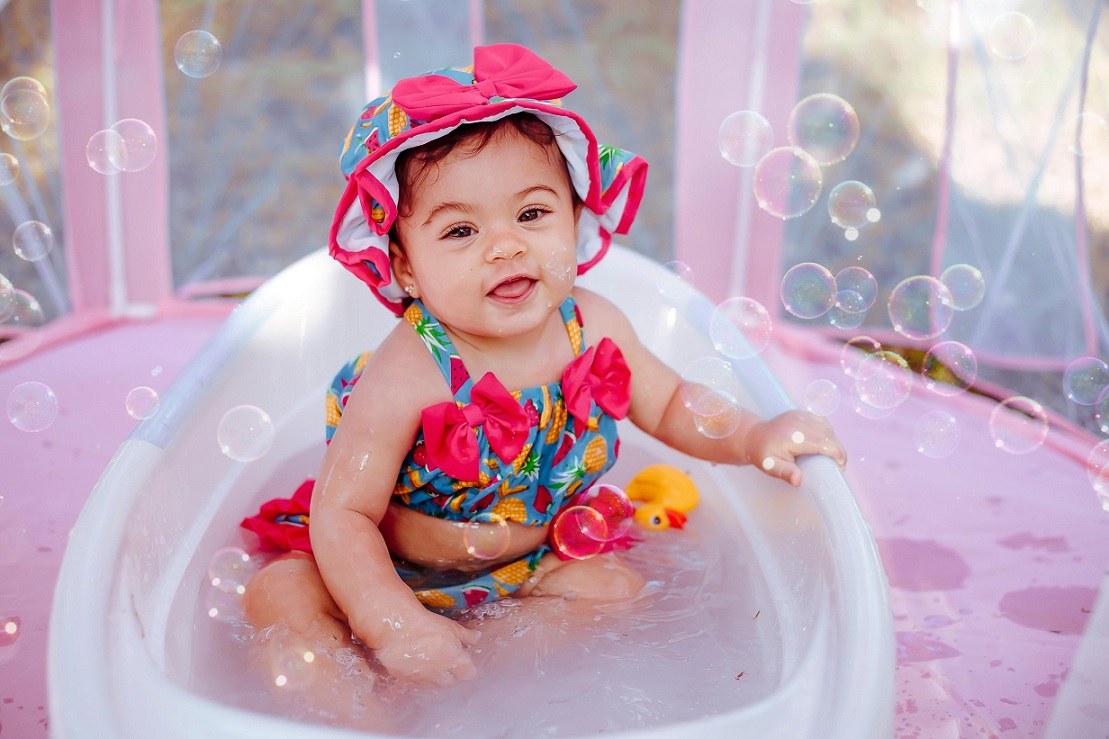Bathing your baby is an essential part of their care routine, providing not just hygiene but also an opportunity for bonding and relaxation. However, for new parents, baby bathing can seem daunting at first. This guide covers everything you need to know to make baby bath time safe, enjoyable, and stress-free.
Why Baby Bathing is Important
Regular bathing helps keep your baby’s skin clean and healthy, prevents infections, and promotes better sleep. Beyond the physical benefits, bath time is a chance to strengthen the emotional bond between you and your baby through gentle touch and eye contact.
 When to Start Bathing Your Baby
When to Start Bathing Your Baby
You can start giving your baby sponge baths shortly after birth. Once the umbilical cord stump falls off (usually within 1-2 weeks), you can introduce tub baths. Always consult your pediatrician for guidance if you’re unsure.
How Often Should You Bathe Your Baby?
Babies do not need daily baths; 2-3 times a week is sufficient for newborns. Over-bathing can dry out their delicate skin. Ensure you clean their face, neck folds, hands, and diaper area daily with a damp cloth.
Essential Baby Bathing Supplies
Here’s what you’ll need for a safe and comfortable baby bath:
- Baby bathtub or basin
- Soft washcloths
- Mild baby soap or shampoo (tear-free)
- A cup for rinsing
- Towels (preferably hooded)
- Clean clothes and diaper
Step-by-Step Guide to Baby Bathing
- Prepare the Bath Area: Ensure the room is warm (around 75°F or 24°C) to prevent your baby from getting cold. Gather all the supplies within arm’s reach.
- Fill the Tub: Use warm water (around 98°F or 37°C). Always test the water temperature with your wrist or elbow before placing your baby in the tub.
- Undress Your Baby: Gently undress your baby, keeping their diaper on if you want to clean their face and hair first.
- Start with the Face and Hair: Use a damp, soft cloth to clean their face. Use a small amount of baby shampoo to wash their hair, rinsing carefully.
- Gently Wash Their Body: Submerge your baby partially in the water, supporting their head and neck. Use a soft cloth and mild soap to clean their body, paying attention to folds and creases.
- Rinse and Dry: Rinse your baby thoroughly using a cup of clean water. Wrap them in a towel immediately to keep them warm and gently pat them dry.

Safety Tips
- Never Leave Your Baby Unattended: Always keep one hand on your baby during bath time.
- Use Non-Slip Mats: Ensure the baby bathtub has a non-slip surface.
- Avoid Hot Water: Always mix the water well to prevent hot spots.
- Limit Bath Time: Keep baths short (5-10 minutes) to avoid chilling your baby.
Making Bath Time Enjoyable
- Sing or Talk: Your soothing voice can make bath time a calming experience.
- Use Bath Toys: Simple toys like rubber ducks can make the experience fun as your baby grows older.
- Create a Routine: Bathing at the same time each day can help establish a comforting routine.
Conclusion
Baby bathing doesn’t have to be stressful. With the right preparation and approach, it can become a cherished time for bonding with your little one. Follow these tips to ensure that your baby stays clean, safe, andhappy during bath time.










[…] 4. Bath Time Safety […]
[…] Tips for a Safe and Enjoyable Bath Time […]
[…] Bathing Basics […]